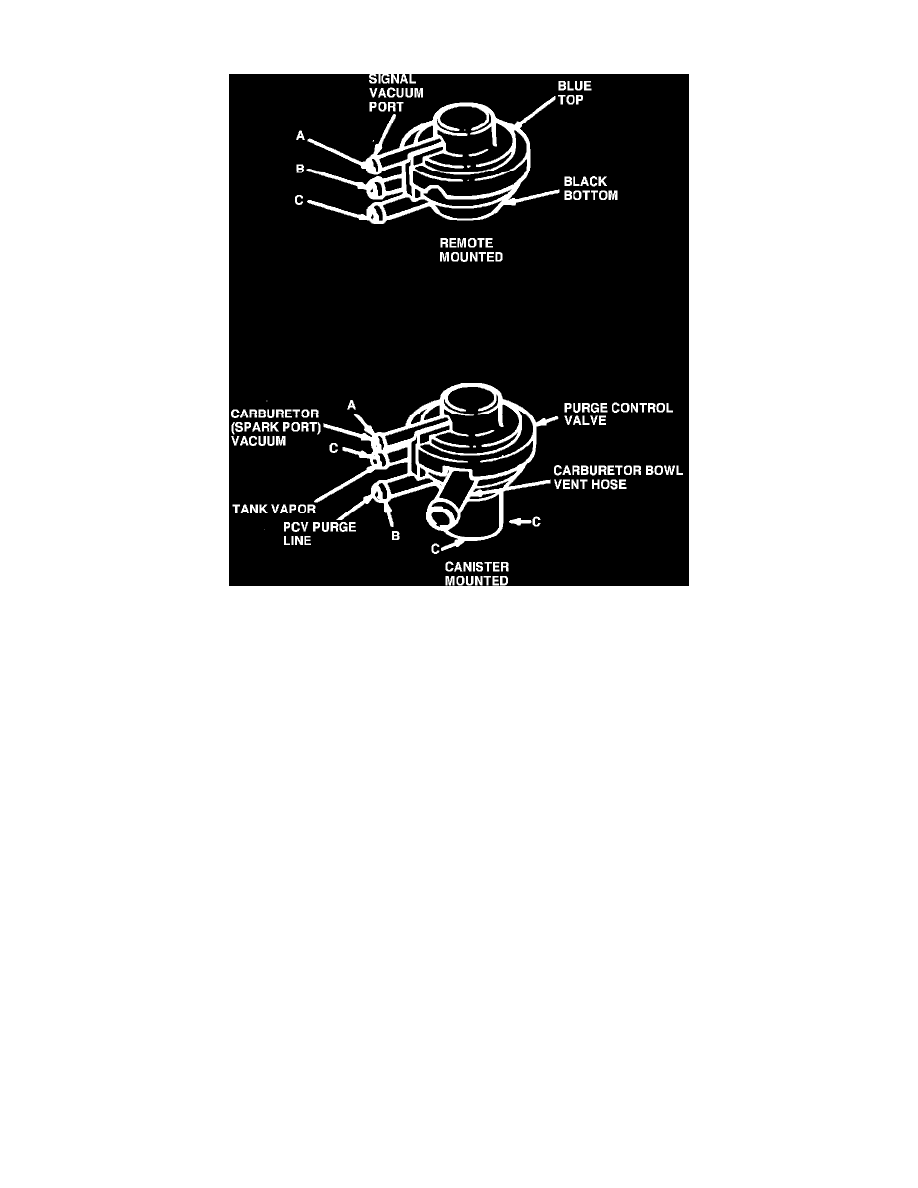Escort L4-98 1.6L SOHC VIN 5 FI (1985)

Canister Purge Control Valve: Description and Operation
Fig. 48 Purge control valve
This valve, Fig. 48, is installed inline with the carbon canister and controls the flow of fuel vapors during various engine operating modes. The control
is provided by a vacuum signal from either the spark port, EGR port or intake manifold and opens or closes the valve accordingly.
When the engine is off, the vapors from the fuel tank and carburetor fuel bowl are routed through the purge control valve and into the carbon canister
for storage.
During normal cruise conditions, spark port or EGR vacuum is strong enough to open the orifice in the purge control valve to allow fuel vapors to
flow from the carburetor canister through the purge line to a connection in the PCV tube or into the carburetor spacer. At the same time, the vapors from
the fuel tank are also directed into the purge line.
At idle and low speed cruise conditions, spark port or EGR port vacuum is not strong enough to open the orifice in the purge control valve so that the
fuel vapors are then routed to the carbon canister. On some vehicles fuel vapors are not purged during low engine speeds because the additional fuel
vapors will affect the fuel air mixture, resulting in a reduction of idle quality and an increase in exhaust emissions. On vehicles not affected by this
purging, manifold vacuum is used to actuate the purge control valve and control the purging of fuel vapors since spark port or EGR port vacuum is too
weak.
